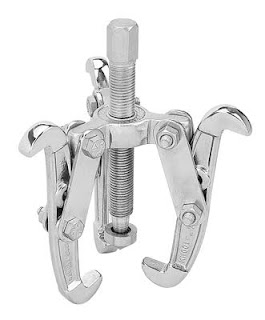In the world of heavy-duty industries, the slogging spanner stands tall as a powerful and indispensable tool. Also known as a sledgehammer spanner or a striking wrench, it is designed to handle high-torque applications and stubborn fastenings. The process behind creating this robust tool is an intricate one, requiring a blend of engineering prowess, advanced technology, and skilled craftsmanship. In this blog, we will take a closer look at the art of slogging spanner manufacturing, where precision meets power.
Step 1: Engineering Brilliance
The journey of slogging spanner manufacturing begins with engineering brilliance. Expert designers collaborate to conceptualize a wrench that can withstand immense force while providing ease of use and safety to the operator. Jaw design, handle length, and material selection are all carefully considered during this phase to ensure the final product meets the demands of heavy-duty industries.
Step 2: Material Selection
Selecting the right materials is paramount in slogging spanner manufacturing. High-quality alloy steel, known for its exceptional strength and durability, is the preferred choice. The material's ability to withstand the tremendous force applied during slogging tasks makes it an ideal candidate for creating robust and reliable slogging spanners.
Step 3: Forging the Foundation
Once the material is chosen, the manufacturing process moves to forging. The selected alloy steel is heated to high temperatures and then subjected to extreme pressure in a forging machine. This process gives the slogging spanner its initial shape and sets the foundation for its strength and resilience.
Step 4: Precision Machining
Precision machining plays a pivotal role in the manufacturing of slogging spanners. Skilled machinists use advanced technology and machinery to refine the wrench's dimensions and ensure precise fit and alignment of the jaws and handle. This step guarantees smooth operation and a secure grip during demanding applications.
Step 5: Heat Treatment
The next critical step is heat treatment. The forged slogging spanner undergoes a carefully controlled heating and cooling process, which includes quenching and tempering. This process enhances the wrench's hardness, toughness, and resistance to wear, enabling it to withstand the harshest working conditions.
Step 6: Assembly and Riveting
Assembling the slogging spanner involves joining the handle and jaw securely. Rivets, made of high-quality steel or brass, are used to fasten these components, ensuring a durable and robust connection. This pivotal joint allows the slogging spanner to absorb impact and transmit force effectively.
Step 7: Surface Finishing
Surface finishing is not merely an aesthetic touch; it serves a practical purpose. It involves coating, plating, or polishing the slogging spanner to protect it from corrosion and wear, enhancing its longevity and performance.
Step 8: Quality Control and Testing
The slogging spanner must undergo rigorous quality control and testing before it reaches the hands of end-users. Torque testing, load capacity evaluation, and overall performance assessments are conducted to ensure that each spanner meets stringent industry standards.
Step 9: Packaging and Distribution
Once the slogging spanner passes all quality checks, it is carefully packaged for distribution. The packaging not only protects the tool during transit but also provides users with relevant information about its specifications and applications.
Conclusion
The manufacturing of a slogging spanner is an art that requires a fusion of engineering expertise and skilled craftsmanship. Each step in the process, from design to quality control, is essential to create a tool that delivers precision and power in equal measure. The slogging spanner's ability to tackle the toughest of fastenings makes it an invaluable asset in various heavy-duty industries, enabling professionals to work with confidence and efficiency. As industries evolve, so does the art of slogging spanner manufacturer, ensuring that this powerful tool remains a force to be reckoned with for years to come. Our reputable hand tools manufacturer takes pride in producing premium-quality tools, designed to meet the demands of professionals and DIY enthusiasts alike. Experience the precision, durability, and efficiency that sets our hand tools apart from the rest.


